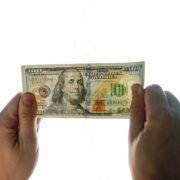Important Tips to Help You Identify Counterfeit Money
Identifying counterfeit money can be challenging and counterfeiters are continually improving their techniques. We want to help you protect yourself from accepting counterfeit money and experiencing a loss. There are several security features on genuine banknotes that you can use to help spot counterfeit money.
Here are some tips on how to identify counterfeit currency:
- Feel the paper: Genuine currency is typically printed on special paper that has a distinct texture and feel. It should feel slightly rough to the touch, not smooth or glossy like regular printer paper.
- Check for watermark: Hold the banknote up to the light to see if it has a watermark. A watermark is a faint image or pattern that becomes visible when you hold the bill up to the light. The watermark should match the portrait on the bill.
- Look for security threads: Most genuine banknotes have a thin, embedded security thread that runs vertically through the bill. Hold the bill up to the light, and you should see the thread with text or a denomination repeated on it.
- Examine the color-shifting ink: Some denominations have ink that changes color when tilted. For example, on the new U.S. $100 bill, the “100” changes from copper to green when tilted.
- Inspect the microprinting: Genuine banknotes often have tiny, intricate text that is difficult for counterfeiters to replicate. Use a magnifying glass, if necessary, to check for microprinting.
- Feel for raised print: On most modern banknotes, certain elements, like the denomination or the Treasury seal, have raised ink that you can feel with your fingers.
- Check for ultraviolet (UV) features: Under a UV light source, genuine banknotes may display fluorescent patterns or markings. Counterfeit notes may not react the same way under UV light.
- Verify the security thread’s location: Ensure that the security thread is in the correct location for the denomination of the banknote. Different denominations may have different positions for the thread.
- Examine the holograms or color-shifting images: Some newer U.S. notes, have holograms or color-shifting images that change when you tilt the bill.
- Be cautious of irregularities: Look for any irregularities, such as blurred or uneven printing, missing security features, or unusual colors. Counterfeiters often make mistakes that can be detected upon close inspection.
- Compare with a genuine note: If you suspect a bill may be counterfeit, compare it with a known genuine note of the same denomination and series. Look for differences in design, size, and security features.
- Trust your instincts: If something about a banknote doesn’t feel right, trust your instincts and exercise caution.
If you believe you have received counterfeit money or are unsure about a banknote’s authenticity, contact your local law enforcement for assistance. Handling counterfeit money is illegal, and it’s crucial to report it to the authorities.




